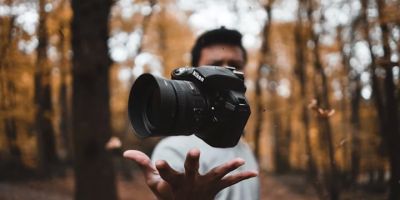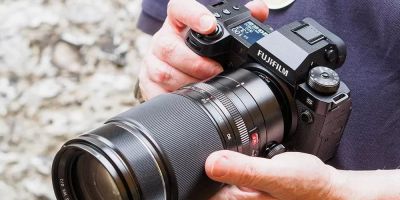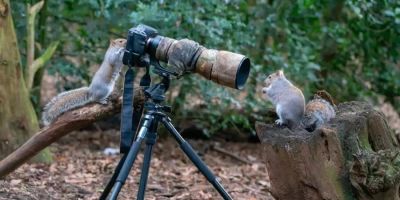- 1-appreciating-the-beauty-of-nature-textures
- 2-choosing-the-right-equipment-for-texture-photography
- 3-techniques-for-capturing-natural-textures-effectively
- 4-using-light-and-shadow-to-enhance-texture-photos
- 5-composition-strategies-for-texture-photography
- 6-real-life-examples-and-stories-from-texture-photographers
- 7-how-photo-studio-supports-your-nature-texture-photography
Appreciating the Beauty of Nature Textures
Nature offers an incredible variety of textures—from the roughness of tree bark to the softness of moss and the intricate patterns on leaves. Learning how to photograph textures in nature allows photographers to highlight these details, creating images that evoke tactile sensations and emotional responses.
Texture photography captures the essence of natural surfaces and invites viewers to experience the environment more intimately. This genre celebrates the small wonders often overlooked in broader landscape photography.
Recognizing and appreciating these textures is the first step in mastering this form of photography. Developing a keen eye for detail enhances your ability to find compelling subjects everywhere outdoors.
Choosing the Right Equipment for Texture Photography
Selecting appropriate equipment is crucial when photographing natural textures. While many smartphones can capture basic texture shots, a DSLR or mirrorless camera with macro capabilities allows you to explore fine details with clarity and sharpness.
Macro lenses, typically ranging from 50mm to 100mm focal lengths, enable close focusing distances, magnifying small textures like leaf veins or insect wings. Additionally, a tripod stabilizes your camera during slow shutter speeds, essential for capturing sharp images in low light conditions common in shaded forest floors.
Filters such as polarizers reduce glare from wet or shiny surfaces, enhancing texture visibility. Investing in quality gear elevates your texture photography, producing rich and immersive images.
Techniques for Capturing Natural Textures Effectively
Mastering how to photograph textures in nature involves specific techniques. Begin by focusing on close-ups that fill the frame with the texture, eliminating distracting backgrounds. Use manual focus for precise control over the focal point, ensuring key details are crisp.
Experiment with aperture settings: smaller apertures (higher f-numbers) increase depth of field, keeping more of the texture in focus, while wider apertures isolate parts of the texture, creating artistic effects.
Incorporate different angles and perspectives. Shooting from oblique angles can reveal surface relief and shadows, accentuating the texture's dimensionality. Moving around your subject helps discover the most engaging viewpoint.
Using Light and Shadow to Enhance Texture Photos
Light plays a pivotal role in texture photography. Side lighting is particularly effective, casting shadows that emphasize surface irregularities and depth. Early morning or late afternoon light provides soft, directional illumination ideal for texture capture.
Overcast days also offer diffuse light that minimizes harsh contrasts but can reveal subtle textures in softer materials like petals or moss. Reflectors or diffusers can be used to modify natural light, balancing exposure and enhancing details.
Understanding how light interacts with surfaces enables you to manipulate your environment creatively, producing captivating texture images.
Composition Strategies for Texture Photography
Effective composition transforms texture photos from simple close-ups into compelling works of art. Use patterns and repetition to guide the viewer's eye, or focus on irregularities and imperfections to create visual interest.
Incorporate contrasting textures within the frame to highlight differences, such as rough bark against smooth leaves. Negative space can provide balance and prevent images from becoming visually overwhelming.
Rule of thirds, leading lines, and framing techniques remain valuable tools for organizing your shots. Combining these compositional elements with texture focus enhances storytelling through images.
Real-Life Examples and Stories from Texture Photographers
Professional photographer Anna Thompson shares how photographing textures in nature deepened her connection with the environment. “I once captured a close-up of frost crystals on leaves early winter morning. The intricate patterns were mesmerizing and challenged me to see beyond the obvious.”
Another case is James Miller, who discovered unique textures in desert landscapes by patiently observing the interplay of sand, wind, and rocks. His images reveal hidden details that tell stories of time and weathering.
These stories illustrate that patience, curiosity, and technical skills combine to create compelling texture photography, inviting viewers to explore the natural world more thoughtfully.
How Photo Studio Supports Your Nature Texture Photography
For those eager to refine their skills or upgrade equipment, Photo Studio offers a curated selection of cameras, lenses, lighting tools, and accessories tailored for texture photography. Beyond products, Photo Studio provides workshops and expert advice designed to help photographers master techniques for capturing natural textures.
Whether you are a beginner or a seasoned photographer, Photo Studio is a valuable resource to enhance your creative journey and produce stunning texture images.





